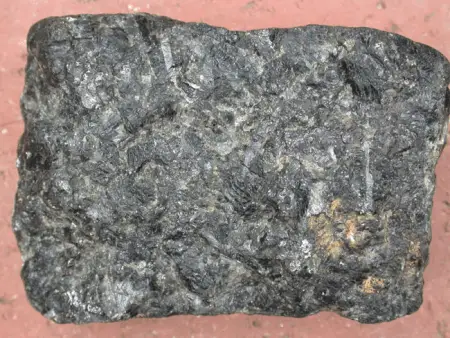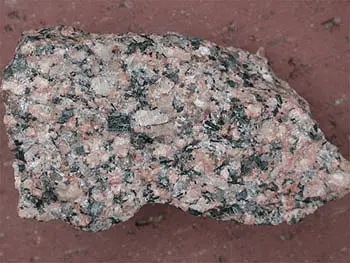The words “mafic” and “felsic” may not be familiar to you, and that’s OK! These terms are used in the English language. It’s easy to confuse these two terms with one another, too. But we’ll help you learn and remember the difference between mafic and felsic rocks!
Geologists use the terms “mafic” and “felsic” to classify rocks into specific groups. This article aims to sift through the rubble and find out how mafic rocks are different from felsic rocks.
Summary Table
| Mafic | Felsic |
| Igneous rocks rich in iron and magnesium | Igneous rocks rich in oxygen, aluminum, silicon, potassium, and sodium |
| Usually dark-colored | Usually light-colored |
| Gabbro, dolerite, basalt | Granite, rhyolite |
What are Igneous Rocks?
All rocks are a mix of one or more minerals. It’s something like making a pie. Each pie recipe is different. For instance, while an apple pie and a pumpkin pie are both pies, each of them contains specific ingredients that make them unique. The same can be said of rocks.
You can find mixes of quartz, mica, and feldspar, which are the ingredients that make up granite. Granite is a type of igneous rock that is identified by its “ingredients.”
Igneous rocks are formed by magma, which is molten rock that comes from a volcano or can be melted rock inside the earth. Eventually, the melted rock makes its way to the surface where it goes through some changes. As magma cools, it becomes more crystalline (crystal-like). Magma forms underground, in the lower crust or upper mantle, where there is quite intense heat.
Igneous rocks come in different compositions, which depends on the magma they come from. Each type of rock can also look different depending on the cooling conditions. Even two rocks from the same magma can be different, depending on whether they cooled quickly or slowly.
The term “igneous” comes from the Latin “igneus”, which means “fiery.” These rocks are classified by how they were formed, their texture, the minerals they contain, their chemical composition, and their geometry.
Definitions

In geology, mafic is a term which describes an igneous rock or a silicate mineral rich in iron and magnesium. The term mafic is a combination of the words “magnesium” and “ferric.” The majority of mafic minerals are dark green or greenish black and are medium to coarse-grained. Minerals that usually form mafic rocks are clinopyroxene and/or orthopyroxene, olivine, biotite, and amphibole. Mafic rocks usually found in abundance include dolerite, gabbro, and basalt.
Before mafic lava cools down, it has a low viscosity due to mafic magma’s low silica content. As water, along with other volatile matter, easily and gradually escapes from mafic lava, volcanic eruptions composed of mafic lava explode less violently compared to some lava of different compositions.

The term felsic describes igneous rocks that are relatively rich in the elements that form quartz and feldspar. Felsic rocks are composed of high levels of magma, silicate materials, and rocks which are also rich in potassium, oxygen, silicon, and sodium. A rock is classified as felsic if it is composed of greater than 75% felsic minerals, which are orthoclase, plagioclase, and quartz. The word “felsic” is a combination of the words “feldspar” and “silica.”
Felsic rocks are mostly light-colored and the most common type is granite. Felsic rocks are composed of minerals such as quartz, orthoclase, muscovite, and feldspars. When it comes to chemistry, felsic minerals and rocks are at the opposite end of the elemental spectrum as mafic minerals and rocks are.
Sometimes, felsic volcanic rocks contain small amounts (i.e. phenocrysts) of mafic minerals such as pyroxene, hornblende, or a feldspar mineral. In such cases, it’s customary for the rock to be named after the phenocryst mineral e.g. “hornblende-bearing felsite.”
Felsic rocks are given chemical names as determined by the TAS (Total Alkali Silica) classification, a system of assigning types of volcanic rocks relative to their alkali and silica content. In addition, if a felsic rock is found to be metamorphic with no traces of volcanic protolith (i.e. unmetamorphosed rock from which certain metamorphic rocks come from) it may just be called a “felsic schist.”
Phaneritic felsic rocks are named using the QAPF diagram. A phaneritic felsic rock is composed of crystals large enough to be seen with the naked eye. It is also common for the species of mafic minerals to be used in the name, such as pyroxene tonalite or hornblende-bearing granite – the term “granite” indicates feldspar and quartz content. Thus, the basic name of a felsic rock is determined by the rock’s texture.
Mafic vs Felsic
So what’s the difference between mafic and felsic? In geology, these terms are descriptive of the chemicals that make up igneous rocks, magmas, and silicate minerals.
“Mafic” is a term that describes igneous rocks or silicate material characterized by a rich content of iron and magnesium while felsic rocks are igneous rocks that are rich in light elements such as oxygen, aluminum, silicon, potassium, and sodium. In terms of chemistry, this means that mafic and felsic minerals and rocks are at opposite ends of the elemental spectrum.
The term “mafic” combines the words “magnesium” and “ferric” and are usually dark-colored rocks. In contrast, felsic rocks are made up of a combination of feldspar and silica and are typically light colored rocks.
Video
Here’s a lesson in geology discussing mafic and felsic rocks.





